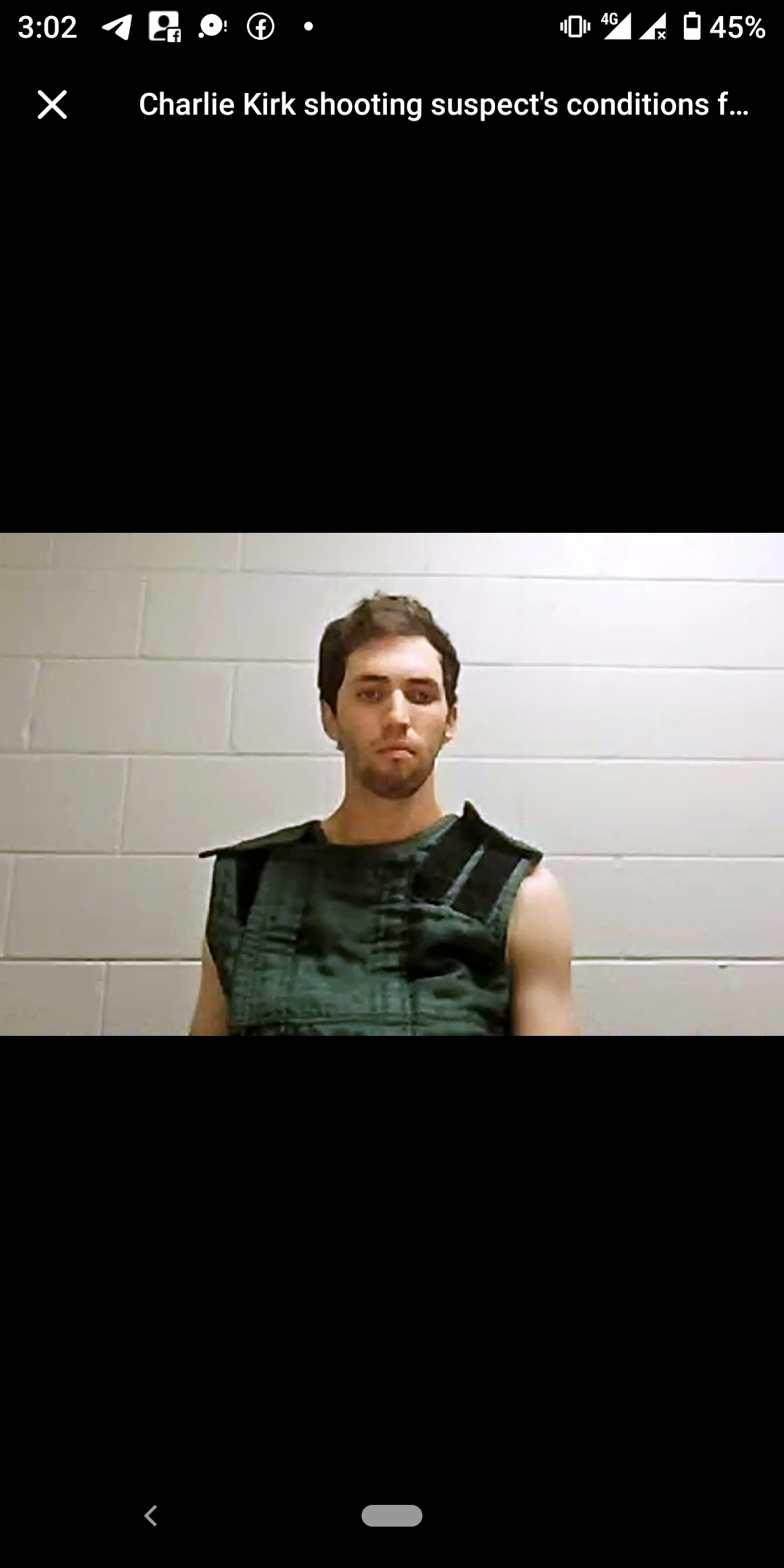NEWS
Breaking News: Tyler James Robinson is accused of Assassinating of political activist Charlie Kirk.. read More

Breaking News: Tyler James Robinson is accused of Assassinating of political activist Charlie Kirk.. read More
Charlie Kirk was shot on September 10, 2025, while speaking at an event on the campus of Utah Valley University in Orem, Utah.
The attack was carried out from a rooftop location about 142 yards (≈130 meters) away, using a bolt-action rifle (specifically identified in sources as a .30-06 Mauser M 98).
The following day, September 11, Robinson surrendered to law enforcement at a sheriff’s office, after being convinced by his parents and a family congregation connection to turn himself in.
The manhunt lasted about 33 hours from the time of the shooting to his surrender.
Formal Charges & Penalty Sought
On September 16, 2025, prosecutors in Utah County filed formal charges against Robinson.
He faces multiple charges, including:
1. Aggravated murder (which in Utah carries eligibility for the death penalty)
2. Felony discharge of a firearm causing serious bodily injury
3. Obstruction of justice (2 counts)
4. Witness tampering (2 counts)
5. Commission of a violent offense in presence of a child
Prosecutors publicly stated they will seek the death penalty in Robinson’s case, citing aggravating factors including the perceived political nature of the act and the fact that children were present.
Key Evidence & Alleged Admissions
DNA & Forensic Links
DNA matching Robinson was reportedly found on the towel used to wrap the rifle and on a screwdriver discovered on the sniper’s roof location.
The bullet casings at the scene had phrases etched on them, which Utah officials have connected to the suspect.
Written Note / Pre-Attack Planning
Prosecutors say Robinson left a note before the attack stating that he “had the opportunity to kill one of the nation’s leading conservative voices and I’m going to take it.”
In texting messages to his romantic partner/roommate, he allegedly lamented:
> “I had enough of his hatred”
“To be honest I had hoped to keep this secret till I died of old age.”
When asked if he was the shooter, he allegedly responded: “I am, I’m sorry.”
Digital & Communication Evidence
Robinson’s roommate has been described as “very cooperative” with investigators, turning over messages and chat logs.
A Discord group chat of which Robinson was a member is under scrutiny. Reports claim that Robinson posted a message soon after the shooting in the chat saying:
> “Hey guys, I have bad news for you all. It was me at UVU yesterday … I’m [sic] surrendering … thanks for all the good times.”
Court Proceedings & Defense Strategy
In a court hearing on September 29, 2025, Robinson appeared virtually (from jail). He did not enter a plea at that time.
His attorney, Kathryn Nester, requested more time to review what both sides acknowledged was a very large (“voluminous”) body of evidence before deciding whether to pursue or waive a preliminary hearing.
The court set the next hearing for October 30, 2025.
According to court records, the defense team is likely to examine whether there are gaps or inconsistencies in the prosecution’s timeline, forensic chain of custody, and the precise timing of texts and physical evidence.
Experts have noted possible weaknesses in the prosecution’s case, such as uncertainties about when Robinson may have returned to the scene or whether body camera footage of a routine police stop matches the suspect timeline.
Motive, Speculation & Political Implications
Utah Governor Spencer Cox publicly stated that Robinson’s political views were very different from those of his conservative family, labeling him as leaning left-wing.
Officials also noted that in the year prior to the attack, Robinson had grown more publicly supportive of LGBTQ+ rights, which may have influenced tensions arising from his relationship with his transgender partner.
However, as of now, no definitive ideological or organizational motive has been legally established.
The killing has spurred national debate about political violence in America, free speech, polarization, and how public figures and activists may become targets.
There has also been controversy over media narratives, framing, and misinformation around the case, including claims about Robinson’s political identity or affiliations that have not been substantiated.
The defense will continue its review of evidence and decide the best legal strategy: whether to seek a preliminary hearing or move to an arraignment.
If the court finds sufficient cause, the case may proceed to a full trial, during which witnesses, forensic and digital evidence will be challenged.
The prosecution’s push for the death penalty will depend on whether the court deems the aggravating factors valid under Utah law, and whether the defense can counter with mitigating evidence.
Investigators may continue exploring broader connections (if any) via communications groups (e.g. Discord), associations, or possible conspirators.
As proceedings progress, additional evidence (e.g. CCTV footage, timestamps, phone metadata) may shed more light on the motive and exact sequence of events.












